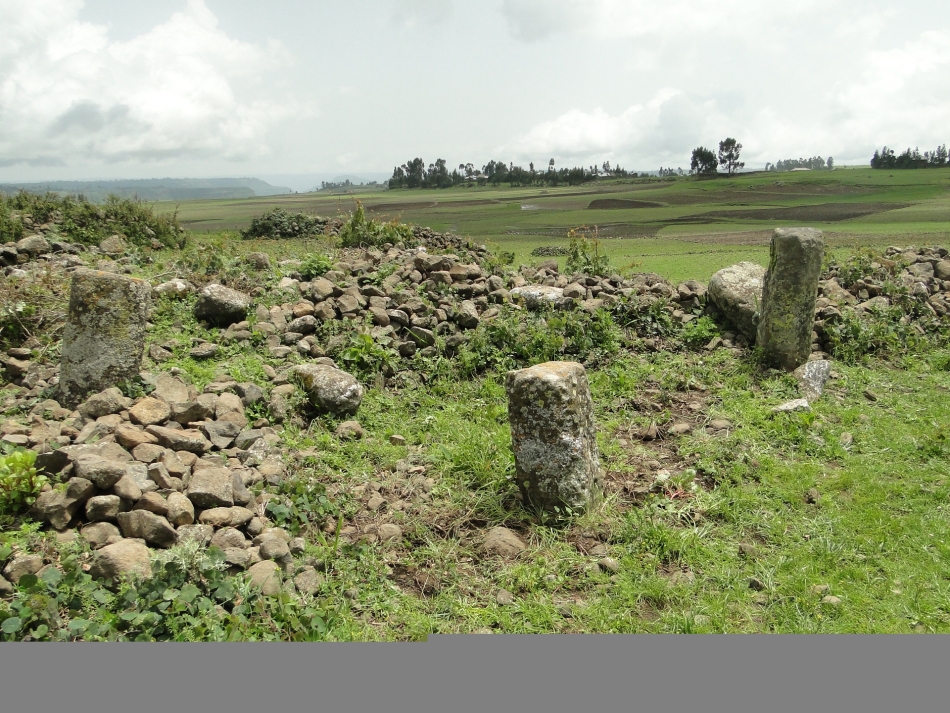The distribution of megalithic sites on the Central Highlands of Ethiopia follows divergent topographic features. There are cases where these sites are found concentrated along river banks and chains of plateaus. The geographic contrast in the region from the highland to the mid- and lowlands, with clear deviation in typology, is another enduring feature of megalithism in the region. As one moves from the tumuli-dominated highlands of Menz towards Ifat in the east, there continues the tumuli tradition but lesser in quantity, with the gradual appearance of stelae culminating with the sole presence of dressed and decorated stelae in Gadelomeda and Ergotila areas, that are adjacent to the megalithic Islam graveyard sites in the east (Alebachew, 2020b; Alebachew, 2020c). These contextual aspects of the Shay Culture can be seen as the major outcome of the study of the spatial expanse of megalithic monuments in the area.
Geographically, both the surveys and excavations encompass megalithic sites in Menz area, particularly Mama, Gera, and Qeya Gebriel, as well as Efrata-Gedem and Mida-Woremo in North Shewa and Ketetiya, Jama and Woreilu in South Wollo. However, due to the massive distribution of monuments, particularly tumuli in Menz and adjacent areas, it is impossible to consider these areas as the sole expanses of the Shay culture. The typology and morphology of monuments and artifacts identified through prospections and excavations are also diverse. For instance, these research works confirmed the presence of three major types of megalithic structures, i.e. tumuli, stelae as well as dolmen, with a total of over three hundred monuments and sites. This concentration of tumuli makes the region special as compared to other megalithic sites in the Southern Ethiopia that are known for the wider distribution of stelae. Furthermore, two extraordinary megalithic sites were documented by the present researcher for the first time (Alebachew, 2020a; Alebachew, 2020b). Interestingly, though they are unrelated, these two monuments are both called Sayǝṭān Gur (“Mound of Satan”). The sites are located in the neighboring districts of Menz Lalo and Menz Mama, with about 30 km distance in between. Their location on a plateau landscape with gorges to their west is evident. The sites are singled out from hundreds of megalithic sites in the study area because of the megalithic complexes they possess. Besides, they are considered as sites rather than monuments because they feature different types of megalithic structures such as pillars, platforms and enclosure associated with the tumulus in both cases (Alebachew, 2020b). The other special type of megalithic structure which was considered in the studies is hypogeum (underground burial). It seems that this kind of burial is not common in the megalithic studies of Ethiopia and elsewhere, except a few examples from Arsi (Joussaume & Cros, 2017).
(Alebachew Belay Birru, February 2023)
